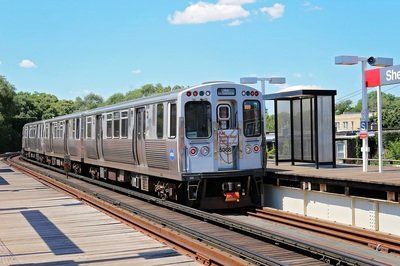Area Information
Area History
Courtesy of the Webster Groves Historical Society
The area that has become Webster Groves, Shrewsbury and Rock Hill features a unique historical and architectural heritage. With names like Pierre Chouteau, Artemus Bullard and Ulysses S. Grant woven into its past, the area is an outdoor museum with more than 200 years of history.
Located ten miles southwest of Saint Louis, the area used to be known to Missouri, Osage Nation and Dakota Indians and fur trappers as the "Dry Ridge." In the early 1800s, the region, once part of the Louisiana Territory, was changing from Spanish to French ownership and a system of land grants was inaugurated to promote immigration.
In 1802, Gregoire Sarpy, a Frenchman who married into the Chouteau family, obtained the rustic wooded land that is now Webster Groves from the Spanish colonial government. In 1842, the land was divided and Sarpy's son, John, received the north 360 acres, and Pierre Chouteau Jr. received the south 1,640 acres. The dividing line became Lockwood Avenue, (the street where the WGSRH Chamber office is now located).
The oldest communities in St. Louis County grew up along the railroad and, in 1853, as the Pacific Railroad pushed its way westward, it built a railroad platform at Church Street, today's Gore Avenue. It was called the Webster Stop after Artemus Bullard's Webster College for Boys (now Great Circle), and Webster began to establish its identity as a commuter suburb. Augustus Moody built a store next to the tracks, founding the Old Webster Business District that still thrives today.
When the Civil War ended in 1865, new interest was sparked in Webster Groves. Houses, businesses, and churches were built as soldiers returned from the war and St. Louis residents moved west from the city to escape its heat, dust and cholera epidemics. Many men commuted to the city daily, while others simply used their Webster Groves homes as summer retreats. After a nationwide depression in the 1870s, Webster Groves began to grow again, with new businesses and new homes pushing out in all directions from the center of town.
In 1891, a group of prominent Webster Groves businessmen established the Webster Real Estate Company and purchased a 160-acre tract they intended to subdivide and promote as an exclusive residential neighborhood called Webster Park. They laid out 210 large lots and created deed restrictions; no commercial buildings could be built within the park and each house had to be at least two stories and cost a minimum of $3,000. They also built a small frame Queen Anne station at Oakwood Avenue and Glen Road and gave it to the Missouri Pacific Railroad to attract commuters to the new subdivision. The station became known as the Tuxedo Park Station and still stands today, now serving as the office of WGSRH Chamber member Blaes Architects.
In 1892, the Webster Real Estate Company published a 32-page booklet called "Webster, Queen of the Suburbs," promoting the advantages of raising a family in the wholesome atmosphere of the country.
The introduction of the Scottish game of golf came to Webster Park in 1903 as the rolling hills and grassy fields of the undeveloped lots were ideal for a golf course. Residents laid out a nine-hole golf course and made arrangements with the Missouri Pacific Railroad to use the Webster Park Station for a locker room. They named their nine holes the Algonquin Golf Club. When, after the first year, someone built a house in the middle of the golf course, Webster Park resident Arthur Deacon loaned the club the money to purchase Samuel Jackson's farm on Berry Road for a new Algonquin golf course, which still exists today.
Through the years, Webster Groves has accumulated a wide variety of architectural styles, as old buildings were preserved and newer structures were built. In residential areas, many large original lots have been subdivided, creating infill housing dating back to the early 1900s and featuring numerous architectural styles, including Queen Anne, American Foursquare, Greek Revival, Bungalow, Tudor Revival and many more. The result is an interesting mix of homes and businesses, churches and schools that reflects the continuing living history of Webster Groves.
Copyright © 2008 Webster Groves Historical Society





















